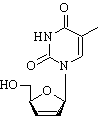On January 5 the FDA and Bristol Myers Squibb warned healthcare professionals about cases of lactic acidosis, which can be fatal, in pregnant women using d4T (Zerit[R]) plus ddI (Videx[R]) as part of a combination regimen. The FDA "talk paper" is reproduced here; Bristol Myers Squibb sent a more technical letter to physicians, pharmacists, and other medical professionals.
FDA/Bristol Myers Squibb Issues Caution for HIV Combination Therapy with Zerit and Videx in Pregnant Women
FDA and Bristol Myers Squibb are warning health, care professionals that pregnant women may be at increased risk of fatal lactic acidosis when prescribed the combination of the HIV drugs stavudine (Zerit) and didanosine (Videx or Videx EC) with other antiretroviral agents.
Lactic acidosis occurs when cells of the body are unable to convert food into usable energy. As a result, excess acid accumulates in the body and vital organs such as the liver or pancreas may be damaged. Severe lactic acidosis is an infrequent, but well-described complication of the class of HIV drugs known as nucleoside analogues. Pancreatitis is also a well-described complication of Videx and Zerit.
This new warning follows three reported cases of fatal lactic acidosis, with or without pancreatitis, that occurred in pregnant women taking Zerit and Videx in combination with other drugs used to treat HIV. Two of the cases were reported from ongoing clinical trials of an investigational HIV drug, and one was identified through worldwide post marketing surveillance. In addition FDA has received several nonfatal reports of lactic acidosis, with and without pancreatitis, occurring in pregnant women receiving only Videx and Zerit. Although data have suggested that women may be at increased risk for the development of lactic acidosis and liver toxicity, it is unclear whether pregnancy potentiates these known side effects.
On January 5, 2001, Bristol Myers Squibb issued a letter to alert health care professionals to the potential increased risk of lactic acidosis and liver damage in pregnant women treated with the combination of Zerit and Videx. Bristol Myers Squibb recommends that the combination of the two drugs should be prescribed for pregnant women only when the potential benefit clearly outweighs the potential risk. One situation where the benefit may outweigh the risk is the use of didanosine plus stavudine in women who have exhausted other treatment options. The letter points Out that exhausted decisions about using the drugs for pregnant women should be made by health care professionals experienced in treating HIV infection.
Because of these reports, the FDA will strengthen the existing black box warnings to include this new prescribing information. Women who are prescribed the combination drug therapy should be closely monitored for clinical or laboratory signs of lactic acidosis and liver damage. This syndrome may develop abruptly, and in the absence of abnormal laboratory values in the weeks preceding its development. Therefore, it is imperative that healthcare providers maintain a high index of suspicion when monitoring these patients. Healthcare providers are encouraged to report any adverse events related to stavudine and didanosine to Bristol Myers Squibb Company (800426-7644). Reports may be submitted to FDA by telephone (800-FDA-1088), fax (800-FDA-0178), online at www.fda.gov/medwatch/ or by mail to: MedWatch (HF-2), Food and Drug Administration, 5600 Fishers Lane, Rockville, MD 20857.
COPYRIGHT 2001 John S. James
COPYRIGHT 2001 Gale Group



